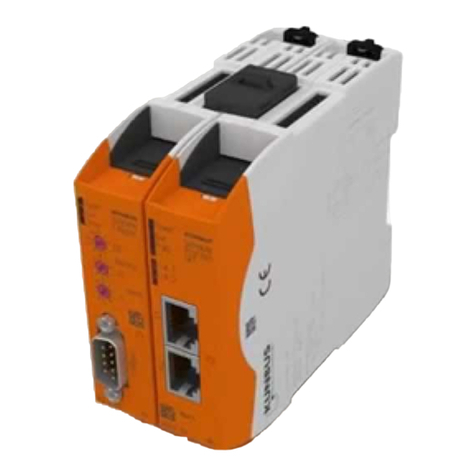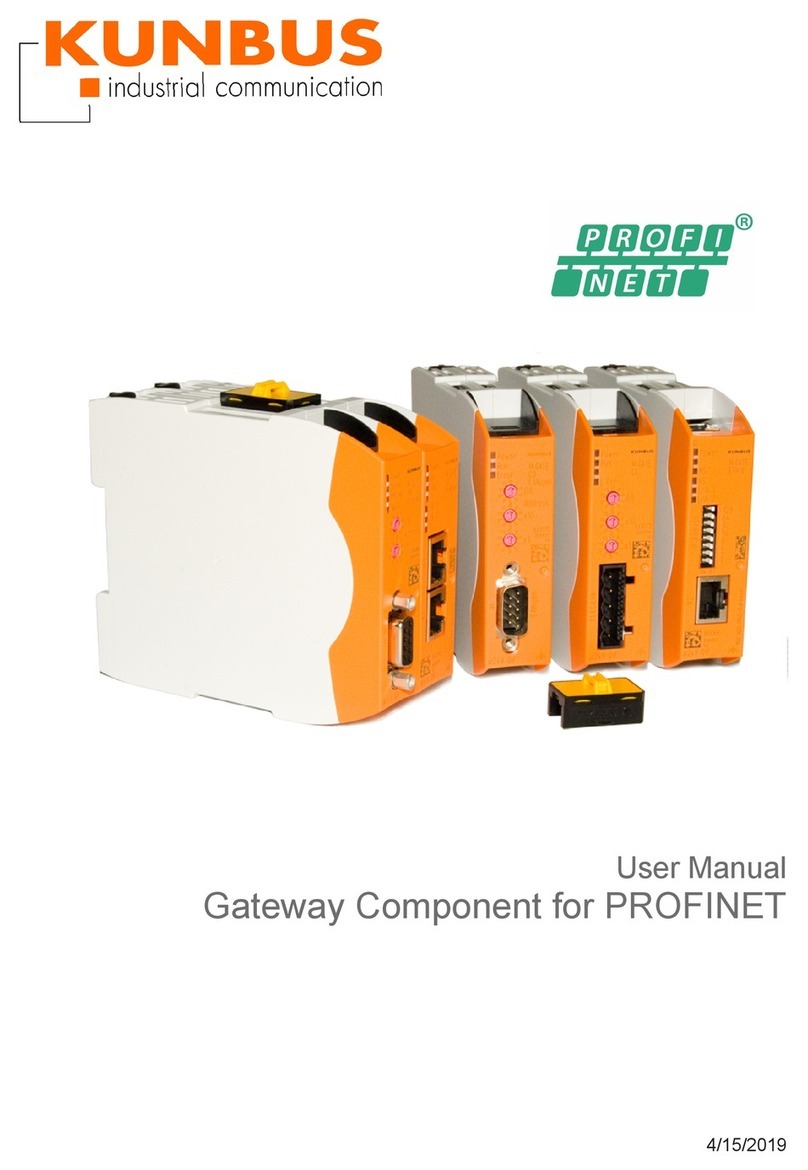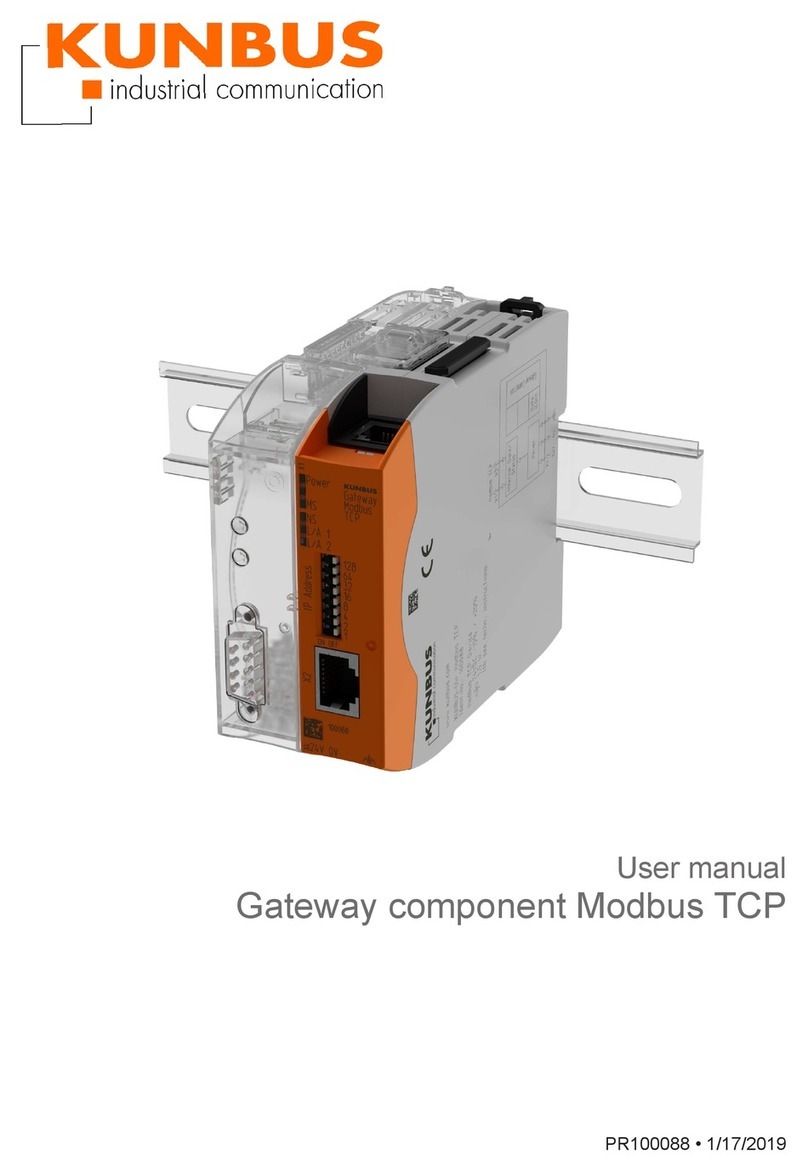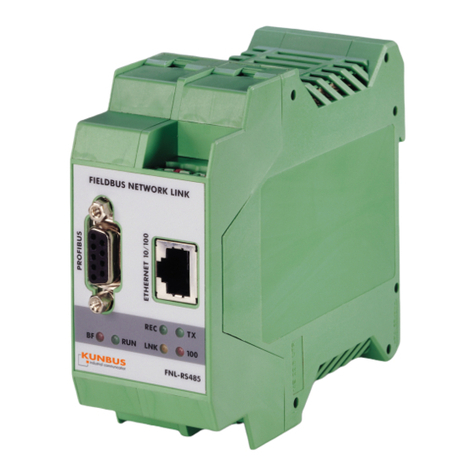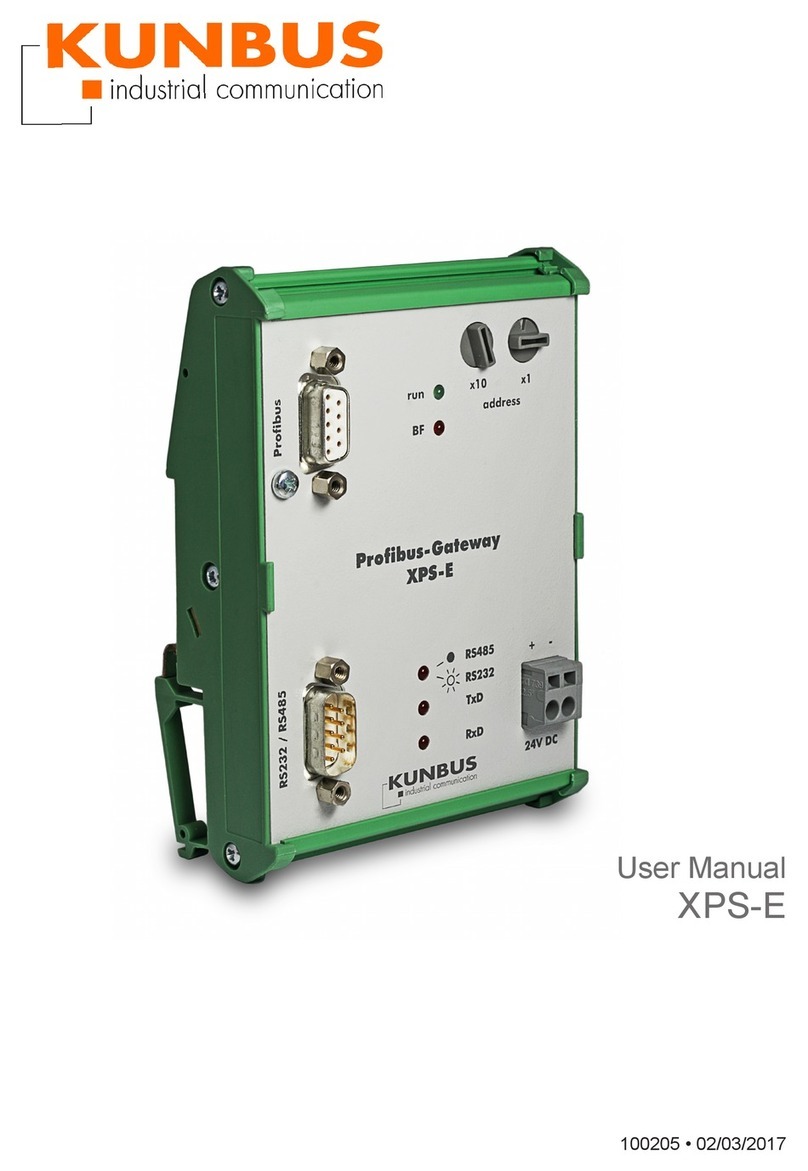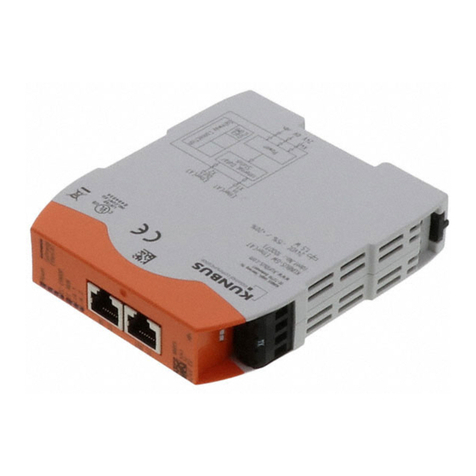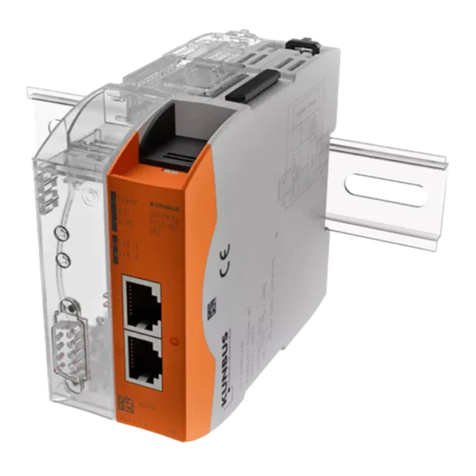
Table of Contents KUNBUS GmbH
ii Gateway component for EtherNet_IP
Table of Contents
1 General Information ........................................................................................................................3
1.1 Disclaimer..................................................................................................................................3
1.2 Notes Regarding this User Manual............................................................................................4
1.3 Validity .......................................................................................................................................4
1.4 Limitation of Liability ..................................................................................................................4
1.5 Customer Service ......................................................................................................................4
2 Safe Use ...........................................................................................................................................5
2.1 User ...........................................................................................................................................5
2.2 Symbols.....................................................................................................................................5
3 Overview ..........................................................................................................................................6
3.1 Functionality ..............................................................................................................................6
3.2 Control Elements .......................................................................................................................8
3.3 Status LEDs.............................................................................................................................11
4 Installation .....................................................................................................................................12
4.1 Preparations for Trouble-free Operation..................................................................................12
4.2 Requirements .........................................................................................................................14
4.3 Connecting Gateway Components..........................................................................................15
4.4 Installing a Gateway in the Control Cabinet ............................................................................16
4.5 Connecting a Power Supply ....................................................................................................17
4.6 Connecting a Gateway to the Fieldbus....................................................................................18
5 Configuration.................................................................................................................................19
5.1 Supported Size of the Process Data ......................................................................................19
5.2 Address Assignment................................................................................................................20
5.3 Ethernet/IP Configuration ........................................................................................................21
5.4 Configuration of Modbus TCP .................................................................................................22
6 Technical Data...............................................................................................................................24
6.1 Technical Data.........................................................................................................................24
